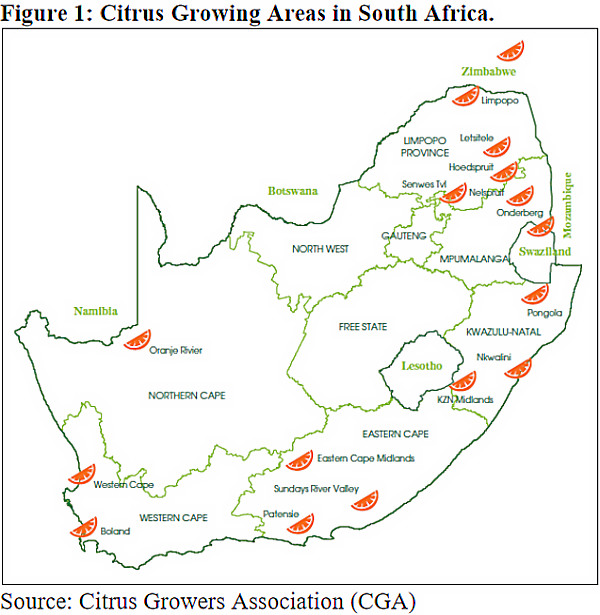Citrus is cultivated throughout South Africa. But mostly in the Limpopo, Eastern Cape, Western Cape, Mpumalanga, KwaZulu-Natal, North Cape, and North-West provinces. In 2019, a total of 86,808 hectares of citrus trees were planted in South Africa. That's an increase of six percent compared to 2018. This growth trend is expected to continue to 95,200 hectares in 2020. Significant investments and easy-peelers, lemons, and new orange varieties being eagerly planted contributed to this.

Limpopo has the largest citrus area in the country. It accounts for 42% of the total planted area. The Eastern Cape (27%), Western Cape (19%), Mpumalanga (8%), and KwaZulu-Natal (2%) follow it. The Western and Eastern Cape have cooler climates. This suits navel oranges, lemon, lime, and easy-peeler farming. Mpumalanga, Limpopo, and KwaZulu-Natal have warmer climates. That's better for growing grapefruit and Valencia.
Oranges are most commonly grow in South Africa. These amount to 50% of the total citrus planted area. Growers have, however, been planting noticeably more easy-peelers, lemons, and limes. This growth is driven by these products' attractive returns on investment. Lemons and easy-peelers have high-profit margins. And global demand peaked. The South African citrus season runs from February to September.
 The most popular citrus varieties planted in South Africa.
The most popular citrus varieties planted in South Africa.
In 2021, orange yields are expected to rise by three percent to 1.7 million tons. In 2019, that was 1,65 million tons. This increase is based on several factors. There have to be normal weather conditions and good rainfall in the main growing area. More acreage must be planted and water must be better managed. Farmers must also plant new high-yielding and late-ripening varieties.
South African oranges are usually harvested from March to September. So far, COVID-19 has had little effect on cultivation, harvesting, and labor.
Bron: USDA
